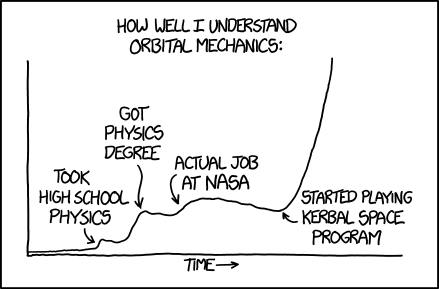- This topic has 25 replies, 19 voices, and was last updated 5 years ago by .
Viewing 26 posts - 1 through 26 (of 26 total)
-
If a satellite fires a thruster opposing it’s motion it speeds up
-
Viewing 26 posts - 1 through 26 (of 26 total)
The topic ‘If a satellite fires a thruster opposing it’s motion it speeds up’ is closed to new replies.
